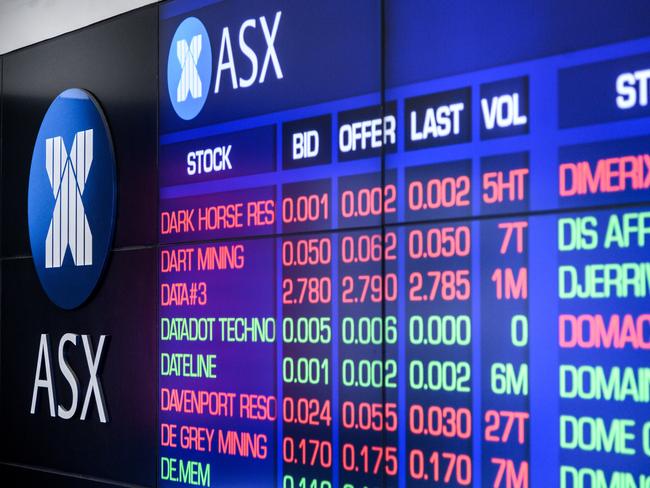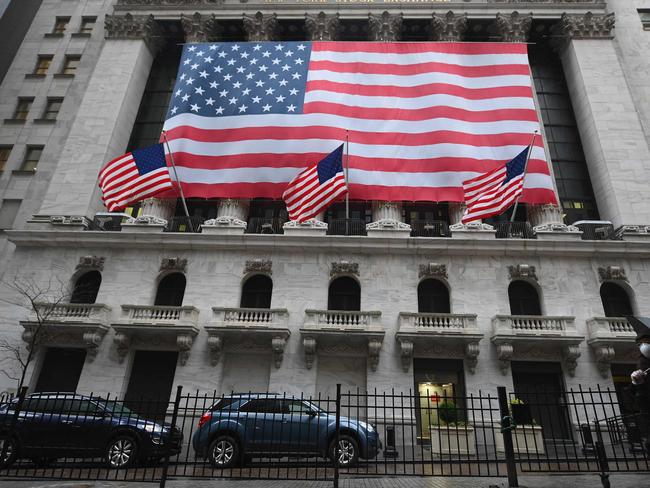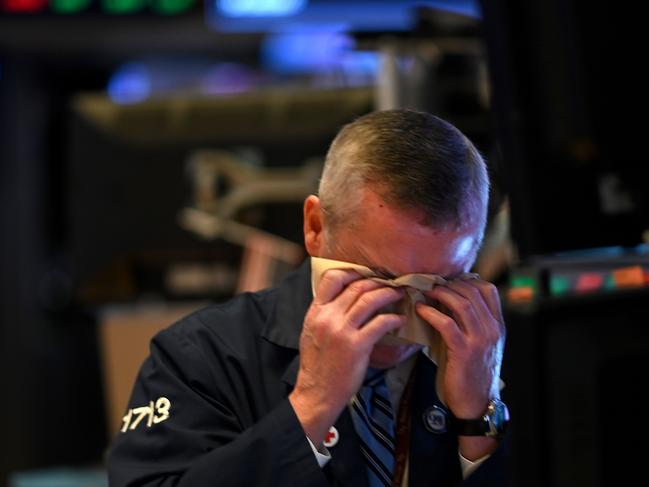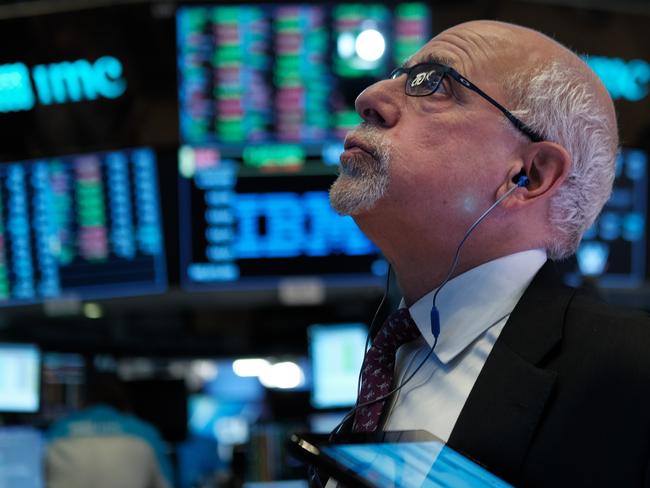Australian shares climb, RBA reveals recession fears
The Australian share market has climbed further after a bounce this morning, as the Reserve Bank released minutes showing members’ recession concerns.
News
Don't miss out on the headlines from News. Followed categories will be added to My News.
The Australian share market has rallied at midday as coronavirus-fuelled volatility continues, even as the Reserve Bank released minutes showing members worrying about the likelihood of a recession.
The S&P/ASX200 benchmark index was up 170.3 points, or 3.35 per cent, at 5,247.1 at 1200 AEDT on Wednesday, while the All Ordinaries index had risen 167 points, or 3.27 per cent, to 5,277.6.
At 11.30 AEDT, the RBA released minutes from its ad hoc meeting a fortnight ago, where it launched emergency stimulus measures.
The minutes showed board members thought it was probable the coronavirus crisis would result in at least two back-to-back quarters of economic contraction. That’s the technical definition of a recession, even if the RBA didn’t use the word.
But all sectors were still well in the black a half-hour later, with energy stocks leading the way, collectively up 8.1 per cent as the price of oil price rose 1.2 per cent to $US26 a barrel.
Woodside Petroleum lifted 8.8 per cent to $19.82, Origin gained 6.9 per cent to $4.68, Oil Search rose 16.0 per cent to $2.76 and Santos was up 8.8 per cent to $3.72.

Energy companies had been smashed throughout March due to the coronavirus pandemic and the eruption of an oil price war between Russia and Saudi Arabia. Property stocks were another strong performer, up 4.2 per cent as Scentre Group rose 11.5 per cent and Vicinity Centres gained 10.6 per cent. All of the big banks were up at midday, with CBA rising 2.4 per cent and Westpac, ANZ and NAB ahead by between 1.0 and 1.5 per cent.
Big miner BHP jumped 4.4 per cent to $30.26 and Rio Tinto shares were up 4.8 per cent to $$88.64.
Goldminers were mixed as the price of the safe-haven metal dropped overnight, with Northern Star down 3.4 per cent and Newcrest and Evolution both down 0.4 per cent.
Health care stalwart CSL rose 3.9 per cent to $308.37.
Transurban shares fell 1.4 per cent to $11.87 after the company flagged a dramatic drop in traffic on its toll roads during March.
Supermarkets gained, with Coles up 3.6 per cent and Woolworths was up 1.3 per cent, while Telstra rose 2.9 per cent to $3.16.
The ASX rise came despite Wall Street suffering more losses overnight as the coronavirus pandemic continued to stoke economic fears.
The Dow Jones ended its worst quarterly performance since 1987 with a 410.32 point fall, or 1.84 per cent drop, to 21,917.16.
It was also the S&P 500’s weakest quarter since 2008, even factoring in last week’s surge on fresh government stimulus.
The Australian dollar was buying 61.14 US cents at 1200 AEDT, down from 61.90 US cents as the market closed on Tuesday.
WALL ST ENDS WORST QUARTER SINCE 1938 AS STOCKS SLIDE
Stocks sank lower on Wall Street as the New York Stock Exchange finished March with its worst three-month period in 82 years.
The S&P 500 index fell a relatively modest 1.6 per cent, leaving it down nearly 19 per cent for the March quarter – the worst first-quarter performance since 1938.
And the Dow Jones industrial average dropped as much as 293.63 points, or 1.3 per cent, to leave it down by 21.7 per cent, its worst quarter since 1987 and the biggest March quarter collapse in history.
To round out the carnage, the tech-focused Nasdaq was on track to finish its worst first quarter since 2008 as it dropped as much as 0.8 per cent.
While the falls Tuesday were relatively small, analysts warned that does not mean the worst is over.

With Americans locked in their homes and factories shutting their doors, millions of workers have lost their jobs and the unemployment rate is predicted to reach a catastrophic 15 per cent, according to Goldman Sachs.
Goldman Sachs also predicts US economic output to plummet at an annualised rate of 34 per cent in the second quarter.
But some investors are seeing a tiny light emerging at the end of a very long tunnel.
“We appear to be seeing improved sentiment,” Yousef Abbasi, global market strategist at INTL FCStone Yousef Abbasi said.
“When sentiment does start to improve around the virus and its ultimate economic impact — the market will find it difficult to ignore the size and scope of the fiscal and monetary stimulus that has been undertaken.”
YOYO PERFORMANCE CONTINUES ON WALL STREET
Wall Street’s yoyo performance continued after US consumer confidence tumbled to its lowest level in nearly three years as the market wrapped up one of the most brutal quarters in its history.

The Conference Board reported Tuesday that its confidence index dropped to a reading of 120 in March from February’s 132.6. It was the lowest reading since the index was at 117.3 in June 2017.
The steep decline in March reflected rising worries about the coronavirus during the survey period of March 1-18. Economists say confidence is sure to fall further as the virus’ impact takes a bigger toll on the economy.

Analysts said the sharp drop in the confidence index reflects rising concerns about the damage the virus will cause and about the sharp declines in stock markets.
“The intensification of COVID-19 and extreme volatility in the financial markets have increased uncertainty about the outlook for the economy and jobs,” said Lynn Franco, senior director of economist indicators at the Conference Board.
“March’s decline in confidence is more in line with a severe contraction – rather than a temporary shock – and further declines are sure to follow.”
Job openings reportedly fell by nearly 9 per cent over the past week, with the drop particularly acute in consumer-related services and trade and transportation.

Travel and tourism openings fell by 44.6 per cent and arts and entertainment dropped 30 per cent during the period.
Goldman Sachs revised its view for how the coronavirus will impact the US economy, predicting a sharper downturn than first thought followed by an even bigger upturn.
Among its expectations are that the unemployment will peak around 15 per cent later this year, well above original expectations for 9 per cent.
